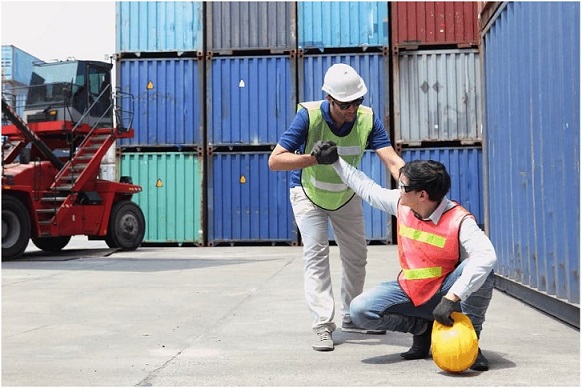Cultivating a culture of safety and environmental responsibility is crucial in the fast-paced industrial landscape of today. Ensuring the health and safety of employees as well as the preservation of the environment is greatly dependent on the dynamic interaction between employee training and the creation of an efficient Environment, Health, and Safety (EHS) culture.
In this piece, we explore the critical role that training plays in fostering an effective EHS culture inside businesses and the ways in which this culture enhances overall performance.
The Foundation of EHS Culture
A solid foundation of employee training is the first step in the long process of developing a healthy EHS culture. Within the framework of Environmental Health (EHS), training comprises education as well as skill development to guarantee that workers are aware of potential hazards and have the means to reduce them. People are better equipped to make decisions at work that are both safe and environmental friendly thanks to this information.
Observance and Guidelines
Ensuring compliance with regional, national, and international legislation is one of the core tenets of the EHS culture. EHS standards are always changing, so it’s important for companies to make sure their staff members are aware of the most recent updates. Employees that receive the right training are better able to comprehend the rules and are also given the tools they need to follow them.
Risk Management
Risk management is highly valued in an efficient EHS culture, and training plays a crucial role in this process. Workers must receive training on how to recognize such risks, evaluate them, and put control measures in place. By honing these risk management techniques through ongoing training, staff members become more equipped to deal with unforeseen circumstances.
Behavioral transformation
Behavioral transformation is the cornerstone of an EHS culture. Beyond only transmitting academic knowledge, training seeks to change the attitudes and behaviors of its participants. Training has the power to change people’s perceptions of their responsibilities to protect the environment and the workplace by encouraging a proactive attitude to safety.
Acquisition of Skills
Training must include the development of skills. Workers must have the training required to handle dangerous products, operate equipment safely, and successfully handle emergencies. These talents are taught throughout training, and it guarantees that staff members can utilize them with assurance when needed.

The Link between Training and EHS Culture
Training acts as a link between individual contributions and corporate goals. It is the spark that unites a disparate group of people into a unified entity dedicated to the EHS principles. The following are some ways that training fosters an EHS culture:
Being Aware
The significance of EHS in the workplace is made more widely known through training. It informs staff members about the repercussions of carelessness and how their conduct affects not just the environment and other people but also their own health. This increased consciousness is the foundation for creating a culture that values safety.
Engagement
The effectiveness of an EHS culture depends on engagement. It is possible to create interactive training programs that motivate staff members to actively participate. Employees that are engaged are more likely to learn new knowledge, pose inquiries, and take responsibility for their own environmental and safety duties.
Regularity
Ensuring uniformity in training guarantees that all staff members receive identical training and are held to the same standards. The organization’s confidence is increased by this consistency, which promotes equity and justice. When workers feel that there are equal standards for all, they are more inclined to accept the EHS culture.
Interaction
Training that works, promotes honest and open communication. It should be easy for staff members to report dangerous situations, near-misses, or dangerous incidences. Training contributes to the development of a culture of shared accountability for environmental stewardship and safety by encouraging employees to speak up in the workplace.
Constant Enhancement
The culture of EHS is dynamic and changes as conditions do. Training ought to be a continuous process that changes with new laws, regulations, and technological advancements. An organization’s dedication to upholding and improving its EHS culture is reflected in its commitment to continuous training improvement.

Benefits of a Strong EHS Culture
Establishing a strong EHS culture has many benefits for an organization, such as:
Decrease in Incidents
There are a lot less accidents, injuries, and environmental issues when there is a strong EHS culture. Workers who have received extensive training and who have a strong commitment to EHS principles are more likely to follow safety procedures and take preventative measures.
Savings on Costs
Organizations can save money by having fewer mishaps and accidents. Some of the financial advantages of a strong EHS culture include lower insurance premiums, medical costs, and legal bills.
Enhanced Standing
Businesses that have a strong EHS culture are well-regarded. Businesses that put safety and environmental responsibility first tend to attract more customers, partners, and future workers.
Law Adherence
Legal hazards and possible fines are reduced in an environment when EHS rules and regulations are followed. Employees that receive training are more likely to grasp their responsibilities and adhere to the rules.
Morale and Retention of Employees
Workers are more content and driven if they feel safe at work and think their company cares about their welfare. Consequently, there is a rise in production and retention rates.

Examples of a good EHS culture

You believe that your organization needs more safety training, but you’re not sure what constitutes a strong EHS culture. Here are three major indicators that you are doing it correctly, however there are plenty of examples available:
- Every worker exhibits a working grasp of health and safety principles
Every person in a great workplace safety culture is somewhat knowledgeable about health and safety issues. To put it another way, they know how to practice safety. They report safety issues and look for ongoing improvement without fear.
- No conflicting priorities—safety always comes first
When it comes to productivity vs safety, your organization consistently selects safety. Risk assessments are sometimes disregarded in organizations in an effort to boost output. This results in avoidable workplace accidents. Your business has a strong safety culture if it prioritizes employee safety, even at financial expense.
- The company is prepared to make investments in health and safety
Safety slogans are great, but it takes money to create a successful safety culture. It is necessary to address potential dangers and safety concerns. A positive safety culture is created via investing in safety to ensure that essential action is performed.
Conclusion
The foundation of a successful EHS culture is training. It gives workers the information, abilities, and frame of mind needed to embrace environmental responsibility and safety. An organization can reap several benefits from a firmly ingrained EHS culture, including less incidents, enhanced reputation, and higher employee satisfaction. Investing in training to foster an EHS culture becomes not just a priority but also a strategic advantage in attaining sustainable success as firms continue to adapt to changing challenges and laws.



